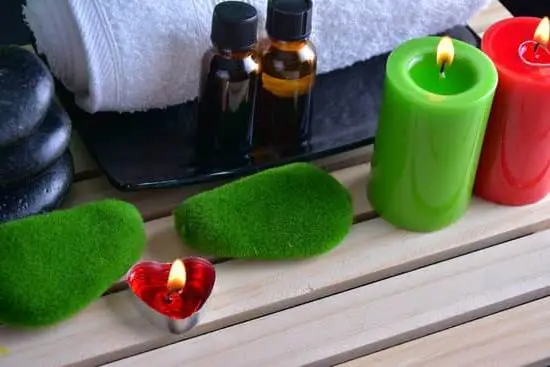Are you looking to enhance your yoga practice with the holistic benefits of aromatherapy? Aromatherapy yoga practice combines the ancient tradition of yoga with the use of essential oils to create a truly immersive mind-body experience. In this article, we will explore the ways in which aromatherapy can complement and elevate your yoga practice, from enhancing relaxation to promoting focus and energy.
Aromatherapy has been used for centuries as a natural remedy for various physical and emotional ailments. When paired with yoga, the benefits of both practices are magnified, resulting in a more profound mind-body connection. By incorporating essential oils into your yoga routine, you can create a sensory-rich environment that promotes relaxation, mental clarity, and emotional balance.
In the following sections, we will delve into the specific benefits of aromatherapy in yoga, discuss how to choose the right essential oils for your practice, offer tips on creating a tranquil aromatherapy yoga space, explore poses that integrate essential oils, and provide guidance on using aromatherapy yoga for stress relief and energy enhancement.
Whether you are new to either aromatherapy or yoga or an experienced practitioner looking to deepen your practice, this article will provide valuable insights into harnessing the healing power of essential oils in your yoga journey.
The Benefits of Aromatherapy in Yoga
Aromatherapy yoga practice is a holistic approach to wellness that combines the benefits of aromatherapy with the ancient practice of yoga. The use of essential oils in yoga practice has been known to enhance the mind-body connection, providing practitioners with a deeper sense of relaxation and focus. By incorporating aromatherapy into your yoga routine, you can experience an uplifting and calming effect on your overall well-being.
There are several benefits of integrating aromatherapy into your yoga practice:
- Enhances relaxation: Aromatherapy has been shown to promote relaxation and reduce stress levels, which can complement the calming effects of yoga.
- Improves focus: Certain scents have the ability to enhance mental clarity and concentration, which can be beneficial when practicing more challenging yoga poses.
- Supports emotional balance: Essential oils can have a positive impact on mood and emotional well-being, helping to create a harmonious environment for your yoga practice.
When choosing essential oils for your aromatherapy yoga practice, it’s important to select scents that resonate with you personally and align with the specific goals of your practice. Some popular essential oils for aromatherapy in yoga include lavender for relaxation, peppermint for focus and energy, and frankincense for grounding and spiritual connection.
Overall, the combination of aromatherapy and yoga offers a unique opportunity to deepen your mind-body connection and elevate your practice to a new level of wellness. By incorporating these two ancient practices together, you can create a more enriching and holistic experience that nurtures both your physical body and your spirit.
Essential Oils for Aromatherapy Yoga Practice
When it comes to practicing aromatherapy yoga, choosing the right essential oils is essential for creating a harmonious balance between mind, body, and spirit. Here are some popular essential oils and their benefits for enhancing your yoga practice:
1. Lavender: Known for its calming and relaxing properties, lavender essential oil can help to reduce stress and anxiety during your yoga practice.
2. Peppermint: If you’re looking to invigorate your senses and improve focus, peppermint essential oil is an excellent choice. Its refreshing scent can help create a sense of alertness and energy during your practice.
3. Eucalyptus: For those with respiratory issues or seeking mental clarity, eucalyptus essential oil can be beneficial. Its fresh aroma can aid in clearing the mind and promoting deep breathing.
When choosing essential oils for your aromatherapy yoga practice, it’s important to consider personal preferences as well as any specific benefits you hope to achieve from the practice. Some practitioners also enjoy blending different oils to create unique combinations that suit their individual needs.
Remember that the quality of the essential oil is also crucial, so be sure to invest in high-quality, pure oils to fully experience the benefits of aromatherapy during your yoga sessions. By exploring different scents and their effects on your mind and body, you can elevate your yoga practice to a whole new level of relaxation and healing.
Creating the Perfect Aromatherapy Yoga Space
When it comes to practicing aromatherapy yoga, creating the perfect space is essential for setting the mood and enhancing relaxation. The environment in which you practice can greatly impact your experience and the effectiveness of the aromatherapy. Here are some key elements to consider when creating your ideal aromatherapy yoga space.
Choosing the Right Elements
To create a calming and serene environment for your aromatherapy yoga practice, consider incorporating elements such as soothing colors, soft lighting, and natural materials. Shades of blue, green, and lavender are often used to promote relaxation, while gentle lighting from candles or salt lamps can help set a peaceful ambiance. Natural materials like bamboo, wood, and cotton can also contribute to a sense of grounding and tranquility.
Setting Up Your Aromatherapy Station
One of the most important aspects of creating an ideal aromatherapy yoga space is setting up a designated area for your essential oils. Choose a spot in your practice space where you can easily access your oils without disrupting your flow during yoga poses. Consider using a diffuser to disperse the scents throughout the room, or simply place a few drops of oil on a cotton ball near your mat.
Creating a Sacred Space
Incorporating elements that hold personal significance or spiritual value can help create a sacred space for your aromatherapy yoga practice. This might include items like crystals, statues, or meaningful symbols that evoke a sense of peace and connection. By infusing your space with personal meaning, you can enhance the overall experience of your practice and deepen your mind-body connection.
By taking the time to thoughtfully design and arrange your aromatherapy yoga space, you can elevate your practice to new levels of relaxation and sensory experience. Finding moments of calm amidst our daily chaos is what ultimately contributes to our own personal growth through well-being-whatever shape or form it may come into play-making conscious choices such as this one should not be ignored when aiming at holistically developing oneself through physical exercise practices like this one.
Aromatherapy Yoga Poses
Incorporating essential oils into your yoga practice can elevate the experience and deepen your mind-body connection. Aromatherapy has been used for centuries to promote relaxation, improve mental clarity, and enhance overall well-being. When combined with yoga, the benefits of essential oils are amplified, creating a truly holistic and rejuvenating practice.
Certain essential oils are known for their ability to calm the mind, reduce stress, and promote relaxation. Lavender, chamomile, and frankincense are popular choices for relaxation and can be diffused in the yoga space or applied topically before a practice. These calming scents can help you achieve a deeper state of meditation and mindfulness during your yoga session.
On the other hand, invigorating essential oils such as peppermint, eucalyptus, and citrus blends can be used to energize the body and focus the mind during more dynamic or challenging yoga sequences. These scents can stimulate the senses and create a refreshing atmosphere that enhances your physical performance while practicing yoga.
When incorporating essential oils into your aromatherapy yoga practice, it is important to choose high-quality oils and use them mindfully. Whether you diffuse them in the air, apply them to acupressure points on the body, or incorporate them into meditation or breathing exercises, essential oils can truly transform your yoga experience.
| Essential Oil | Benefit |
|---|---|
| Lavender | Promotes relaxation and reduces stress |
| Peppermint | Invigorates the body and stimulates focus |
| Eucalyptus | Cleanses the airways and provides mental clarity |
Aromatherapy Yoga for Stress Relief
Stress has become a common issue in our fast-paced modern lives, and finding ways to manage and reduce stress is essential for overall well-being. Aromatherapy yoga practice is one effective method that can help calm the mind and body, promoting relaxation and reducing stress levels.
When practicing aromatherapy yoga for stress relief, it’s important to choose the right essential oils that have calming and soothing properties. Lavender, chamomile, and bergamot are popular choices known for their stress-relieving benefits. These essential oils can be diffused in the yoga space or applied to the skin before beginning the practice to enhance the overall experience.
Incorporating aromatherapy into yoga practice can also be achieved through specific breathing techniques. Pairing deep breathing exercises with the inhalation of calming essential oils can have a powerful impact on reducing stress and promoting a sense of peace and relaxation. This combination helps create a tranquil atmosphere that allows yogis to let go of tension and worries, fostering a deeper mind-body connection during their practice.
| Essential Oil | Calming Properties |
|---|---|
| Lavender | Reduces anxiety, promotes relaxation |
| Chamomile | Soothes nerves, relieves tension |
| Bergamot | Eases stress, uplifts mood |
Aromatherapy Yoga for Energy and Focus
The Benefits of Aromatherapy Yoga for Energy and Focus
The use of aromatherapy in yoga can have numerous benefits when it comes to increasing energy and improving focus. Certain essential oils such as peppermint, lemon, and eucalyptus are known for their invigorating properties and can help awaken the mind and body during a yoga practice. These scents can also promote mental alertness, improve concentration, and elevate mood, making them ideal for individuals seeking an energy boost or needing to enhance their focus.
Incorporating Aromatherapy Into Your Yoga Practice
When integrating aromatherapy into your yoga routine, it’s important to consider the different ways in which you can utilize essential oils to promote energy and focus. Diffusing essential oils in the yoga space can create an ambient environment that stimulates the senses and enhances mental clarity. Additionally, applying diluted essential oils topically before or during specific yoga poses can provide a direct sensory experience that helps boost energy levels and maintain focus throughout the practice.
Overall, aromatherapy yoga for energy and focus offers a holistic approach to enhancing mental alertness while simultaneously caring for physical well-being. By tapping into the power of scent through carefully selected essential oils, individuals can harness the benefits of aromatherapy to support their journey towards improved concentration, heightened awareness, and increased vitality during their yoga practice.
Closing Thoughts
In conclusion, integrating aromatherapy into your yoga practice can truly enhance the mind-body connection and provide numerous benefits for your overall well-being. The combination of essential oils with yoga poses creates a powerful synergy that promotes relaxation, stress relief, energy, and focus.
By choosing the right scents and creating the perfect aromatherapy yoga space, you can set the mood for a deeply soothing and rejuvenating practice. Whether you are looking to calm your mind and body or stimulate your senses, aromatherapy yoga offers a holistic approach to achieving balance and harmony in your life.
The use of essential oils during yoga practice has been shown to have a profound impact on reducing stress and anxiety levels, as well as improving mental clarity and focus. Certain scents such as lavender, chamomile, and sandalwood are known for their calming properties, making them ideal choices for relaxation during yoga sessions.
On the other hand, invigorating scents like peppermint and citrus can help uplift your mood and increase alertness during your practice. With the right combination of essential oils and yoga poses, you can tailor your aromatherapy yoga practice to meet your specific needs at any given time.
In embracing the healing power of aromatherapy in your yoga practice, it’s important to remember that there is no one-size-fits-all approach. Each individual may respond differently to various scents and their effects may vary based on personal preferences.
Therefore, it’s advisable to experiment with different essential oils and observe how they affect your mind and body during your yoga practice. Ultimately, incorporating aromatherapy into your yoga routine allows you to experience a deeper sense of relaxation, increased mindfulness, and overall improved well-being.
Frequently Asked Questions
What Is Aromatherapy Yoga?
Aromatherapy Yoga is the practice of combining yoga with the use of essential oils to enhance the overall experience. The aroma of the oils can help to create a more relaxing and calming environment for the practice.
What Is Aromatherapy Practice?
Aromatherapy is the use of essential oils to promote physical, mental, and emotional well-being. It can be practiced through inhalation, topical application, or diffusion of the oils in the air to achieve different therapeutic effects.
What Essential Oils to Use for Yoga?
There are several essential oils that are commonly used in yoga practice, including lavender for relaxation, peppermint for clarity and focus, eucalyptus for deep breathing, and citrus oils like lemon or bergamot for an energizing effect. Each oil has its own unique properties that can complement the benefits of yoga practice.

Are you looking for a natural way to improve your health and wellbeing?
If so, aromatherapy may be the answer for you.





